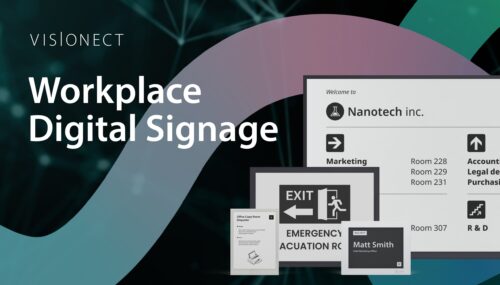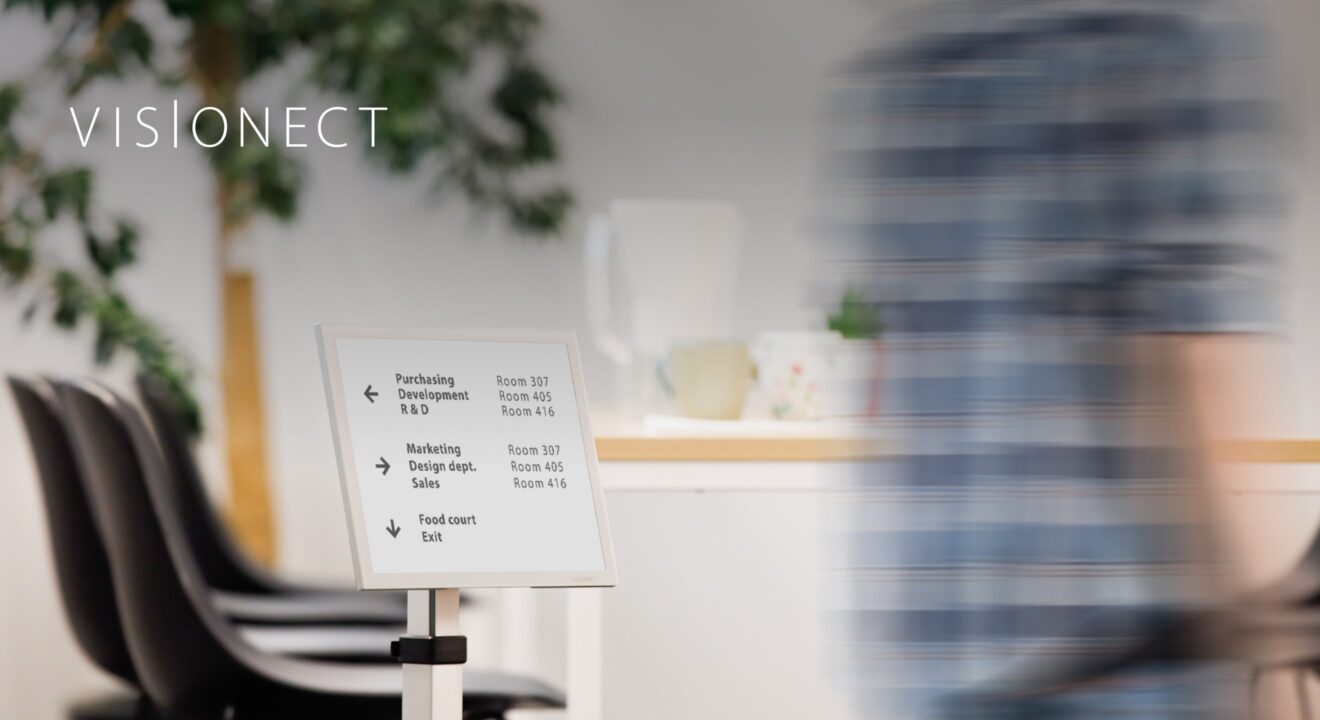

How E-Paper Displays Transform Everyday Wayfinding
Visionect, 31 Mar 2025
Wayfinding is the process of helping people navigate and orient themselves in physical spaces. More than just signs and maps, it’s a combination of design, technology, and psychology that makes moving through unfamiliar environments intuitive.
From clear signage in offices to digital directories in shopping malls, wayfinding ensures people can find their destination efficiently and with minimal frustration. These elements include visuals like symbols and colors, spatial layout strategies, and interactive digital signage.
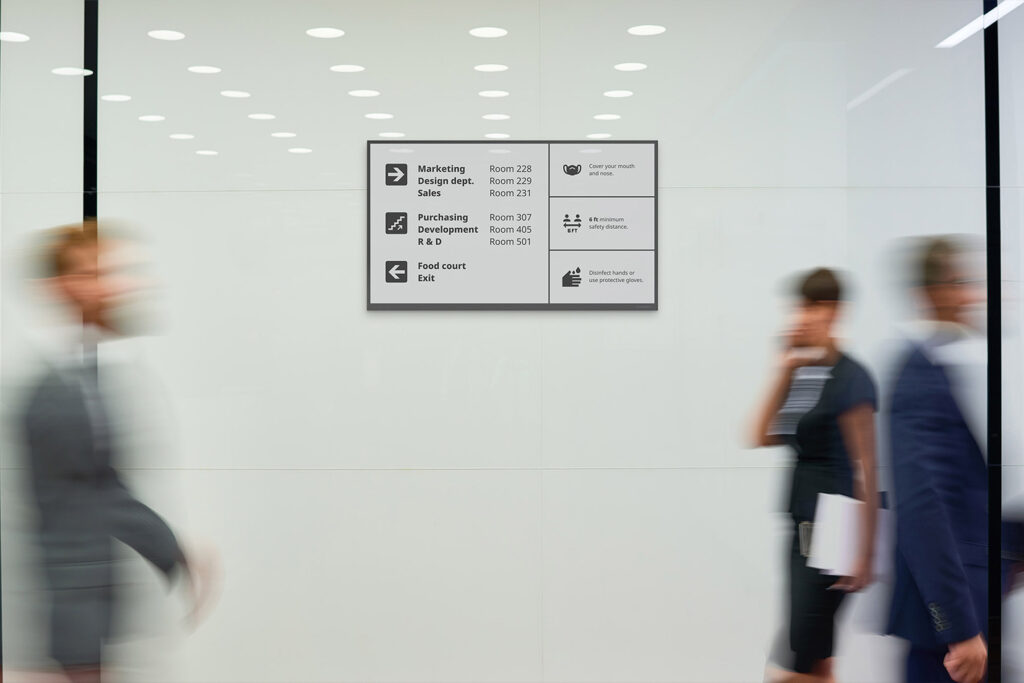
How Wayfinding Shapes Our Everyday Spaces
Every space we enter has a system that subtly guides us toward our destinations. Below, we explore how different spaces currently manage navigation.
Wayfinding in IKEA: A Guided Journey
IKEA’s layout is a masterclass in wayfinding, guiding shoppers through a curated path with directional arrows, overhead signage, and intuitive shortcuts. Without realizing it, customers follow a seamless flow, exploring every section while easily finding what they need.
Wayfinding in a Hospital: Clarity in Critical Moments
Hospitals can be overwhelming, but effective direction — such as color-coded pathways, clear signage like arrows leading to departments, and strategically placed maps — helps patients and visitors reach their destinations. Well-designed paths reduce stress, helping people navigate complex layouts, especially when every minute counts.
Wayfinding in Office Spaces: Navigating the Modern Workplace
Office wayfinding often relies on printed signs, static directories, and floor maps. With frequent layout changes, booked meeting rooms, and visiting guests, up-to-date signage can mitigate confusion and delays.
Navigating Luxury Resorts: Effortless Exploration
Discreet signage, sculpted pathways, and ambient lighting guide guests seamlessly through the resort. Strategically placed maps and concierge make navigation effortless, allowing visitors to fully immerse themselves in the experience.
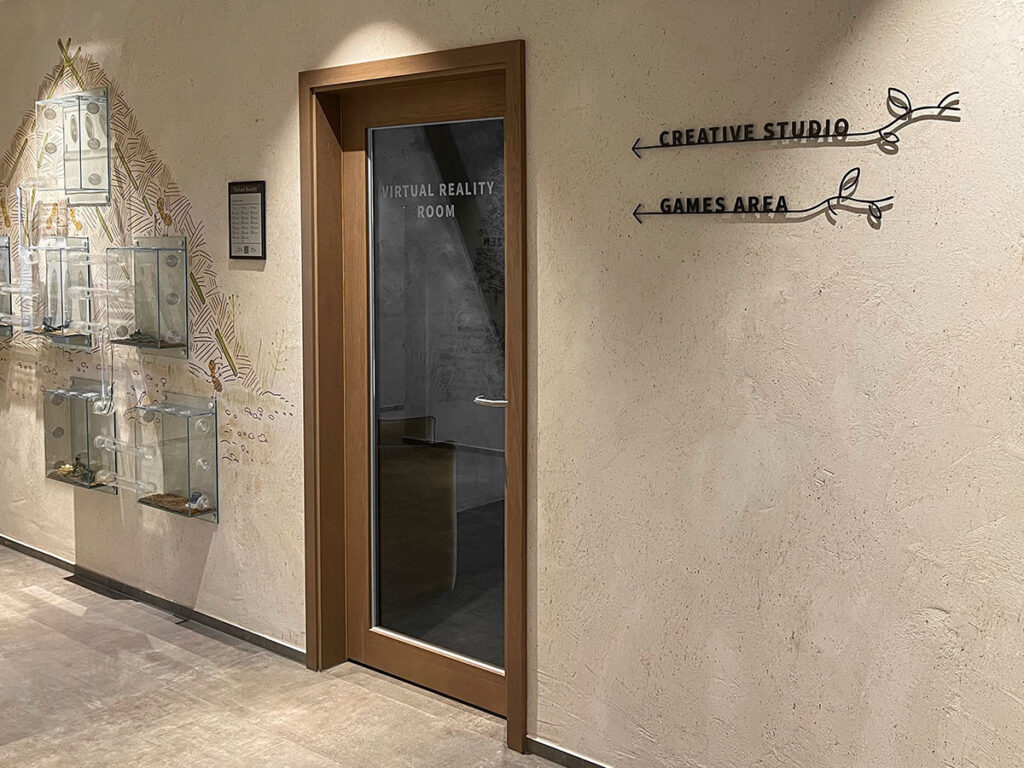
Transforming the Experience with Wireless Digital Displays
Wireless electronic paper displays are revolutionizing wayfinding, making navigation simpler and more efficient than ever. With no need for wiring or cabling, these lightweight, low-power screens install as easily as a sheet of paper — yet deliver real-time, dynamic updates.
From retail and healthcare to offices and resorts, they’re helping people find their way while keeping spaces modern and energy-efficient. Clear, versatile, and timeless, e-paper signage is redefining how we move through the world.
To see how they work in action, explore Visionect’s line of e-paper displays as you read — each section highlights use cases where these solutions can make a real difference.
EXPLORE OUR E-PAPER DISPLAYSWayfinding in IKEA: A Smarter Shopping Flow
Retail centers are evolving into experiential spaces, making intuitive navigation essential and sustainability a priority.
Electronic paper checks both boxes:
- A 32” low-power screen at the entrance could show an interactive floor plan, highlighting current promotions or high-traffic areas in real time.
- 13” e-ink displays along the path could suggest alternative routes for those in a hurry or even highlight product recommendations based on nearby sections.
- 6” energy-efficient screens could provide quick directional arrows or display limited-time offers, making the shopping experience personalized and efficient.
Wayfinding in a Hospital: Real-Time Guidance When It Matters
“Eighty-five percent of patients report asking for directions at a hospital, and 30 percent get lost.” – Med City News.
Here’s how e-paper can help:
- 32” e-paper floor plan displays in main lobbies could show routes to key departments, updating for closures or wait times
- 13” electronic ink displays outside rooms could indicate which doctor is on duty, the ward’s schedule, or appointment check-in steps.
- 6” digital signage displays on patient room doors could provide names or visitation schedules — minimizing confusion for staff and visitors alike.
Smarter Office Wayfinding with E-Paper Displays
Hybrid work and flex spaces are increasing the need for effective wayfinding. Here’s how e-paper fits in:
- 32” large e-paper screens in lobbies could display real-time office layouts, highlighting booked meeting rooms, upcoming events, or visitor check-in instructions.
- 13” low-power displays in hallways could guide employees to major meetings, show room availability, or even display seating arrangements in hot-desking environments.
- 6” touchscreens outside meeting rooms could automatically share the room’s schedule, upcoming bookings, or allow employees to reserve the space on the spot.
Wayfinding in a Luxury Resort: A Seamless, Adaptive Experience
Hotels are replacing printed or static signs with digital screens that can be updated via a CMS. Let’s look at some solutions:
- 32” public information displays in key areas could showcase resort maps or highlight upcoming events.
- 13” e-ink screens at pathways could shift between directional signage and personalized welcome messages.
- 6” electronic ink displays on conference rooms or other doors could show real-time availability, letting guests know when a space is reserved or if a sunset yoga session is about to begin.
Real-World Wayfinding Solutions with E-Paper Displays
Now that we’ve explored hypothetical use cases for e-paper displays, let’s have a look at real-world scenarios. Each of the organizations below uses E-Ink displays to enhance on-site wayfinding.
Performing Arts Venues
Steelhouse Omaha uses electronic paper displays for wayfinding in key backstage areas, primarily outside dressing rooms. The low-power displays clearly indicate room assignments for artists, list staff members, and provide real-time updates on performer schedules — all wirelessly managed via a content management system (CMS).
Mounted without wiring and requiring minimal power, these digital signage solutions seamlessly integrate with the venue’s aesthetic while ensuring effortless navigation for artists and staff.
Plus, the displays incorporate branding elements, enhancing Steelhouse Omaha’s professional presentation.
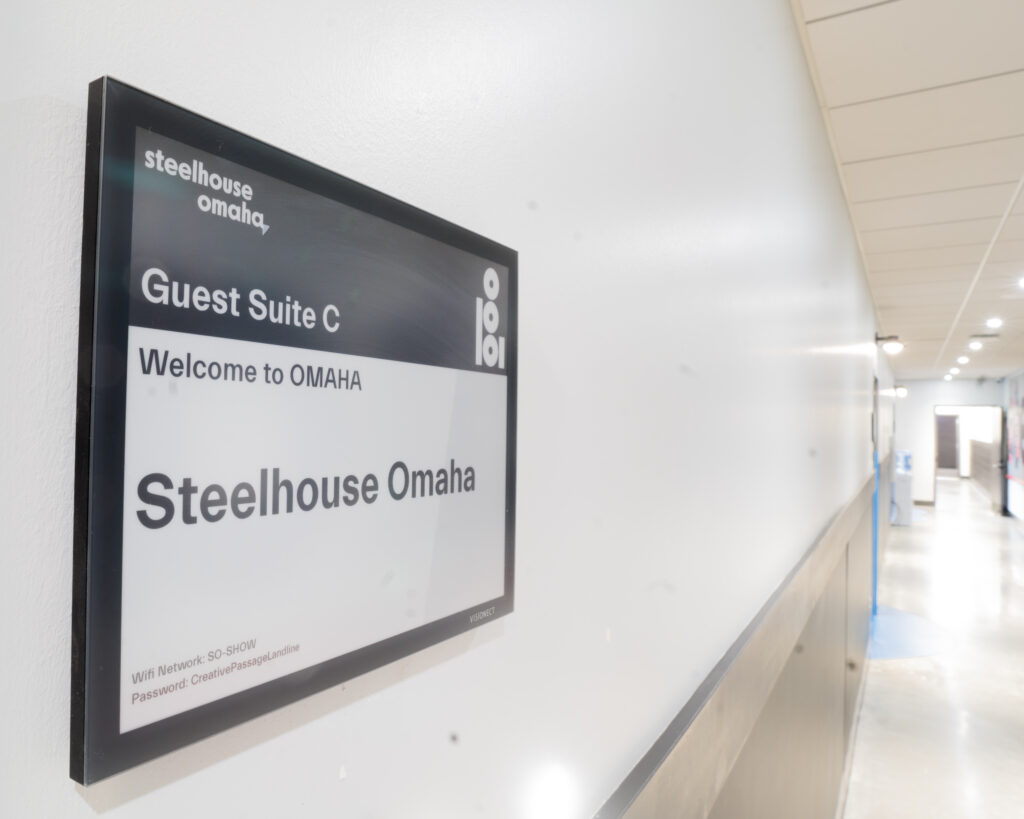
Education Facilities
The University of Applied Sciences Northwestern Switzerland uses electronic paper signage for navigation and communication across its campus.
Approximately 170 Place & Play devices, ranging from 6” to 32”, display academic schedules, floor plans, QR codes, and real-time room occupancy information. The 13” electronic paper display is particularly popular for room labeling and capacity updates. The system ensures seamless content management without the need for drilling or wiring.
This energy-efficient digital signage enhances navigation, optimizes space usage, and aligns with the university’s sustainability goals through low-power digital signage.
Office Spaces
At The Hague Tech, e-ink digital signage streamlines meetings and enhances wayfinding, supporting seamless navigation for visitors and community members.
With a 13” e-ink electronic paper display at the entrance, guests can find available meeting rooms, while 6” large e-paper screens outside each room enable easy bookings. Community Manager Femke Veen highlights how these interactive digital signage screens help guide attendees by displaying event names and meeting details, reducing the need for staff assistance.
The Hague Tech even integrated an agenda feature and monetized their meeting rooms, making e-paper displays an essential tool for efficiency, organization, and cost savings.
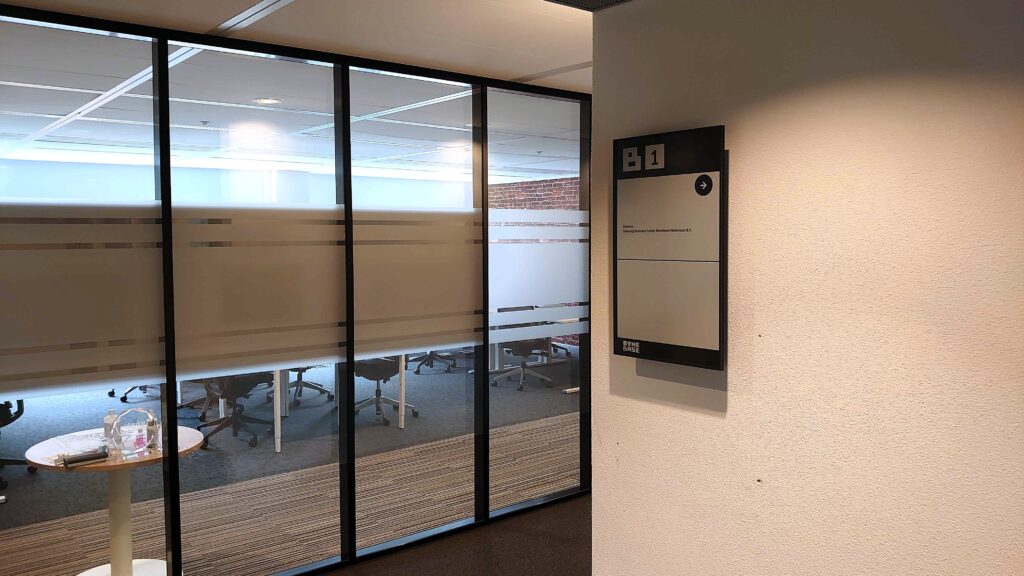
Airports
E-paper displays at Schiphol’s The Base provide real-time wayfinding, helping visitors navigate the dynamic space. With ultra-low power consumption and wireless connectivity, these sleek, battery-powered signs update effortlessly to reflect changing layouts, guiding guests precisely where they need to go. Combining sustainability with a modern design enhances the visitor experience while blending into the environment.
Effortless Content Updates with a Powerful CMS
Keeping wayfinding information accurate and up to date is effortless with a robust content management system (CMS). The Place & Play CMS allows users to create, schedule, and update content in real time, making sure that directions, room availability, and other essential information is always current.
EXPLORE OUR CMSThe Future of Wayfinding: E-Paper Displays in Action
Wayfinding isn’t just about getting from point A to point B — it’s about making navigation seamless, stress-free, and even enjoyable. E-paper displays bring this vision to life with real-time updates, dynamic content, and a sleek, wire-free design. From universities to offices and event venues, industries are already transforming spaces by improving efficiency, cutting costs, and supporting sustainability.
Ready to transform wayfinding in your space? Get in touch to learn more.
Tags

